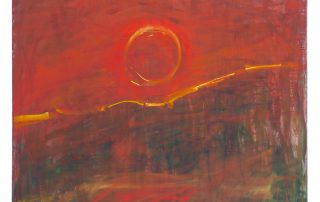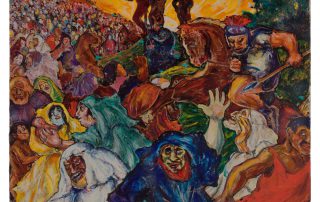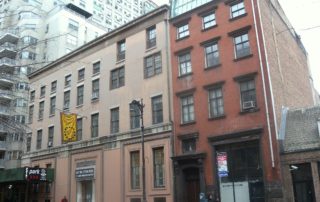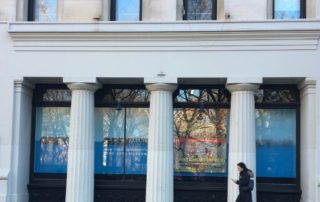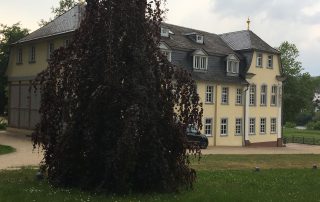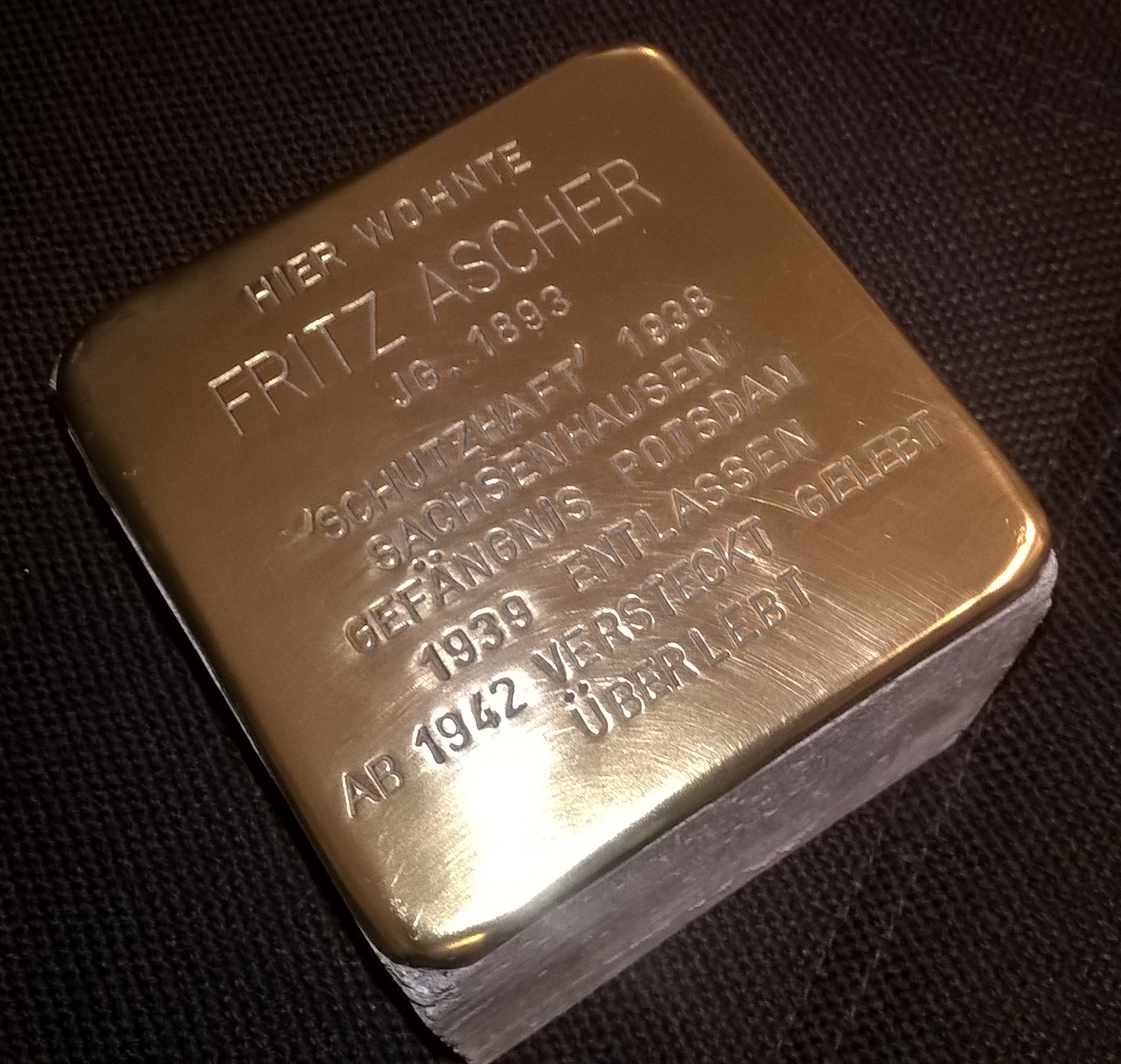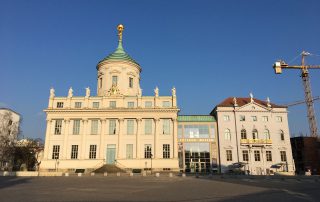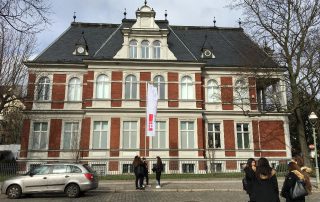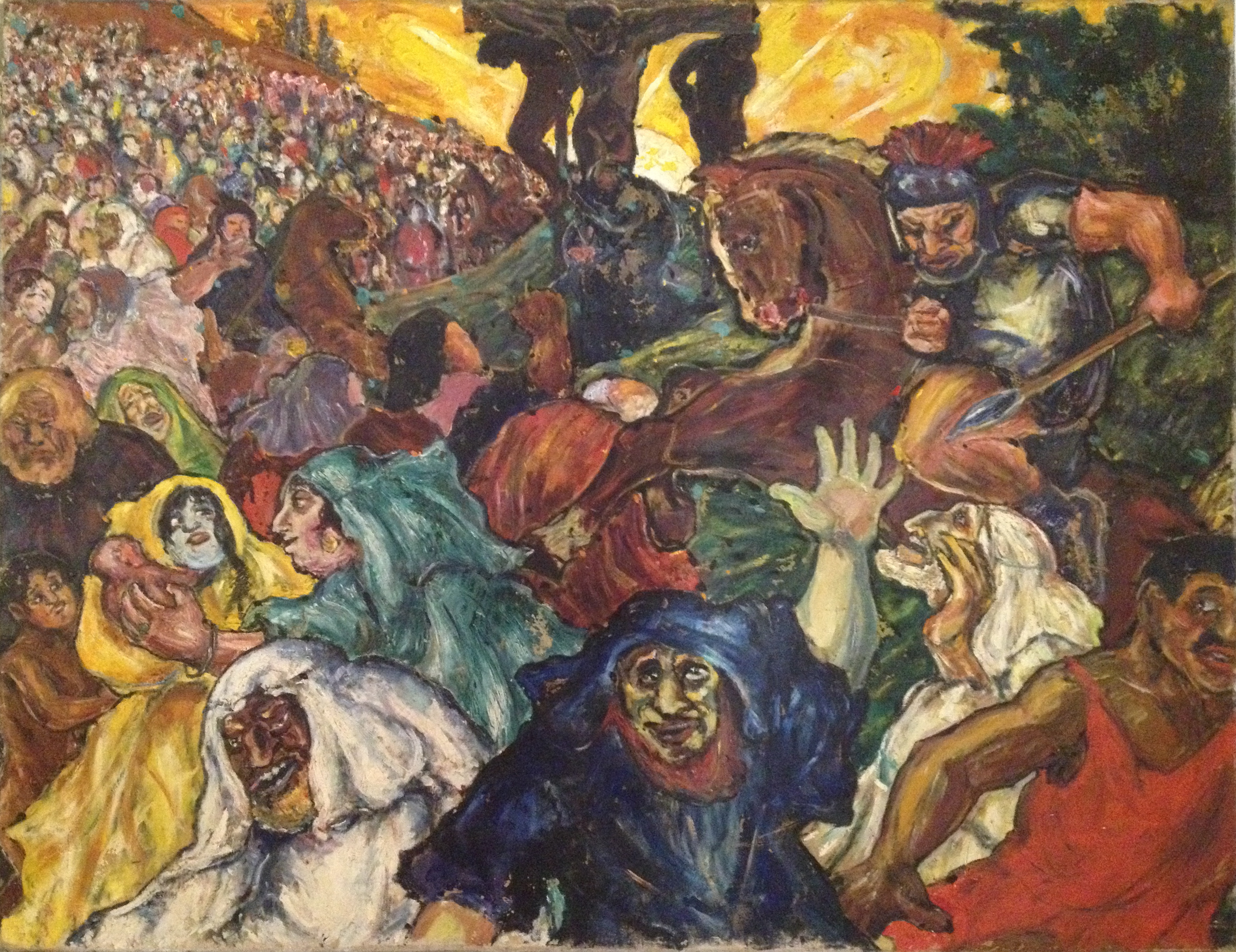Rachel Stern2019-03-26T08:08:38-04:00March 25th, 2019|Select Press Coverage|
"What If? The Life And Work of Fritz Ascher Part I" http://artwithhillary.blogspot.com (scroll down for translation into German) Fritz Ascher (1893 - 1970), Untergehende Sonne (Sunset), c. 1960, oil on canvas, 49.2 × 50 in. ( 125 × 126 cm) Private collection. Photo: Malcolm Varon. © Bianca Stock The current exhibition Fritz Ascher: Expressionist at New York University's Grey Art Gallery is artistically impressive and historically important. Accordingly, ArtWithHillary February 2019 and ArtWithHillary March 2019 are devoted to an account of the show. The artist Fritz Ascher (1893 - 1970) suffered through a horrific period of time from 1933 through 1945 in which he was prohibited from producing art. No one will leave the exhibit without thinking what if the artist had [...]
Rachel Stern2019-02-15T10:25:48-05:00February 15th, 2019|Select Press Coverage|
"Finally Home with the Greats. An exhibition places the under-the-radar Fritz Ascher squarely in the canon of 20th-century German artists.” (scroll down for translation into German) ‘Golgotha’ (1915), by Fritz Ascher, in which inflections of Pieter Bruegel the Elder coalesce with James Ensor to create a scene of pandemonium and horror. ©Bianca Stock For those of us who consider themselves familiar with German Expressionism, the compelling new exhibition at New York University’s Grey Art Gallery, “Fritz Ascher: Expressionist,” makes us wonder why this artist hasn’t been on our radar screens. The 67 works of art on display, along with sketchbooks and documentary materials, may not quite qualify as a discovery, but they significantly [...]
Rachel Stern2020-03-03T09:23:23-05:00January 25th, 2019|Events, Past Events|
Panel Discussion: Expressionism for Our Time New York Studio School, 8 West 8th Street Wednesday, March 6, 6:30–7:30 pm Expressionism for Our Time features a brief history of Western Expressionism by art critic and curator Karen Wilkin, followed by a conversation between contemporary artists Rochelle Feinstein, Judy Glantzman, and Adrianne Rubenstein with art historian Robert Slifkin. Watch the video of the event here. Karen Wilkin is an independent curator and critic, a regular contributor to New Criterion, the Wall Street Journal, and Hudson Review. She teaches the New York Studio School’s MFA art history seminars. Robert Slifkin is Associate Professor of Fine Arts at the Institute of Fine Arts, New York University. His book Out of Time: Philip Guston and the Refiguration of [...]
Dave2019-04-07T07:43:51-04:00December 20th, 2018|Events, Past Events|
April 3, 2019, 6:30-7:30pm J. English Cook: Gallery Conversation Grey Art Gallery at NYU, New York (please add map) Please join J. English Cook, Graduate Curatorial Assistant, Grey Art Gallery, and Ph.D. Candidate, Institute of Fine Arts, NYU for a gallery conversation. The event is sponsored by the Grey Art Gallery, New York University and The Fritz Ascher Society. It is part of Wunderbar Together: The Year of German-American Friendship 2018/19, an initiative of the Federal Foreign Office of Germany and the Goethe-Institut, with the support of the Federation of German Industries (BDI).
Rachel Stern2018-11-26T05:40:08-05:00September 4th, 2018|Newsletter|
Dear Friends, I know, this summer I seem obsessed with Fritz Ascher’s I know, this summer I seem obsessed with Fritz Ascher’s Dancers from 1921. But there is one more thought about the drawing that I want to share. Fritz Ascher, Dancers, 1921. Private collection. Photo Malcolm Varon ©2018 Bianca Stock Fritz Ascher, Dancers, 1921. Private collection. Photo Malcolm Varon ©2018 Bianca Stock When the drawing was created,“Freikörperkultur” (FKK) or “free body culture” had become popular in Germany. Founded in 1898 in Essen, Germany, the nudist culture was about celebrating the body unencumbered by clothes, in nature and sunlight. Many of the naturists came from the Wandervogel movement, the pre-eminent German youth movement, founded to escape the repressive and [...]
Rachel Stern2018-12-03T16:06:56-05:00May 23rd, 2018|Exhibitions, Past Exhibitions|
The worldwide first Fritz Ascher Retrospective is on view at Museum Schlösschen im Hofgarten in Wertheim/Main until September 9, 2018. Here, a representative group of powerful paintings and drawings spans Ascher's whole oeuvre from first academic studies to monumental Expressionist figure compositions to late landscapes. Fritz Ascher's poems, written while hiding from Nazi persecution, can be discovered as "unpainted paintings" in relation to his artwork. In Wertheim, Ascher’s work can be seen in the context of his supporter Max Liebermann and his teachers Lovis Corinth, Ludwig Dettmann and Curt Agthe, thanks to the Schlösschen’s exquisite collection of Berlin Secession art. (website link) SWR Aktuell reported. (website link) Photos by Elmar Kellner and David Stern. A comprehensive German/English catalogue with [...]
Rachel Stern2018-12-04T11:47:15-05:00March 23rd, 2018|Newsletter|
Dear Friends, I was touched by how many neighbors and friends from near and far came out into the chilly but sunny winter weather on February 21 to celebrate Fritz Ascher and recognize his persecution by the National Socialists by laying a “Stolperstein” (stumbling stone) at Niklasstraße 21/23 in Berlin-Zehlendorf, where his family lived from 1909. Thank you to the anonymous donor for making this event possible, to Dirk Jordan (AG Stolpersteine), Michael Rohrmann (Projekt Stolpersteine) and Wolfgang Ellerbrock for organizing it, to Cornelie von Bismarck for creating a beautiful context, and to Sabine Witt from Museum Charlottenburg-Wilmersdorf in Berlin and Jutta Götzmann from Potsdam Museum for supporting it. A special thank you to the students from Potsdam for reciting [...]
Rachel Stern2018-12-04T11:50:09-05:00February 8th, 2018|Newsletter|
Dear Friends, Fritz Ascher is getting a “Stolperstein” (stumbling stone)! Please join us for the ceremony on Wednesday, February 21 at 11:00am at Niklasstr. 21/23 in Berlin-Zehlendorf Stolpersteine (stumbling stones) is a project of the artist Gunter Demnig. The project commemorates people who were persecuted by the Nazis between 1933 and 1945. Stolpersteine are concrete blocks measuring 10x10cm which are laid into the pavement in front of the last voluntarily chosen places of residence of the victims of the Nazis. Their names and fate are engraved into a brass plate on the top of each Stolperstein. In Berlin, thousands Stolpersteine were installed since 1996. Today, Stolpersteine can be found in 1099 German cities and in 20 European countries. (link) We [...]
Rachel Stern2018-12-03T16:06:56-05:00December 10th, 2017|Exhibitions, Past Exhibitions|
Coming home: With more than 80 paintings and works on paper, the worldwide first Fritz Ascher Retrospective is on view at the places where Fritz Ascher lived and worked, with parallel exhibitions in Berlin and Potsdam. Each venue shows a representative group of powerful paintings and drawings, which span Ascher's whole oeuvre from first academic studies to monumental Expressionist figure compositions to late landscapes. Both venues present Fritz Ascher's poems, written while hiding from Nazi persecution, as "unpainted paintings" in relation to his artwork. The Potsdam Museum shows Ascher’s artistic development in four galleries, starting with early masterworks like the monumental “Golgotha” and “The Tortured”. The second gallery shows Ascher’s love for music and stage and for the Clown theme [...]
Rachel Stern2018-12-03T16:06:56-05:00December 8th, 2017|Exhibitions, Past Exhibitions|
Coming home: With more than 80 paintings and works on paper, the worldwide first Fritz Ascher Retrospective is on view at the places where Fritz Ascher lived and worked, with parallel exhibitions in Berlin and Potsdam. Each venue shows a representative group of powerful paintings and drawings, which span Ascher's whole oeuvre from first academic studies to monumental Expressionist figure compositions to late landscapes. Both venues present Fritz Ascher's poems, written while hiding from Nazi persecution, as "unpainted paintings" in relation to his artwork. In Berlin, Museum Charlottenburg-Wilmersdorf in der Villa Oppenheim shows an overview of the artist’s creative development, with a focus on works that relate to Berlin. We see his sketch of the artist Max Liebermann as [...]
Rachel Stern2018-12-04T12:21:16-05:00October 25th, 2017|Select Press Coverage|
Bilder eines Vereinsamten Das Museum Gunzenhauser erinnert an den kaum bekannten jüdischen Künstler Fritz Ascher: Dessen expressionistisch-symbolistische Bilder sind eine echte Wiederentdeckung wert, denn zwei Weltkriege konnten seine künstlerische Kraft nur schwächen - aber nicht brechen Matthias Zwarg CHEMNITZ - Es gibt ein Porträt von Fritz Ascher aus dem Jahr 1912, gemalt von seinem Freund Eduard Bischoff. Es zeigt einen optimistischen jungen Mann: Anzug, rote Krawatte, frech den Kopf auf den Arm gestützt, lächelt er froh und selbstbewusst dem Betrachter entgegen. Und es gibt ein Selbstporträt von Fritz Ascher aus dem Jahr 1953: Weiss und grau über schwarzer Tusche, Aquarell-Farbtupfer wie Wunden in dem Gesicht, in das so etwas wie die Suche nach Fassung nach dem Entsetzen eingeschrieben ist. Dazwischen [...]


